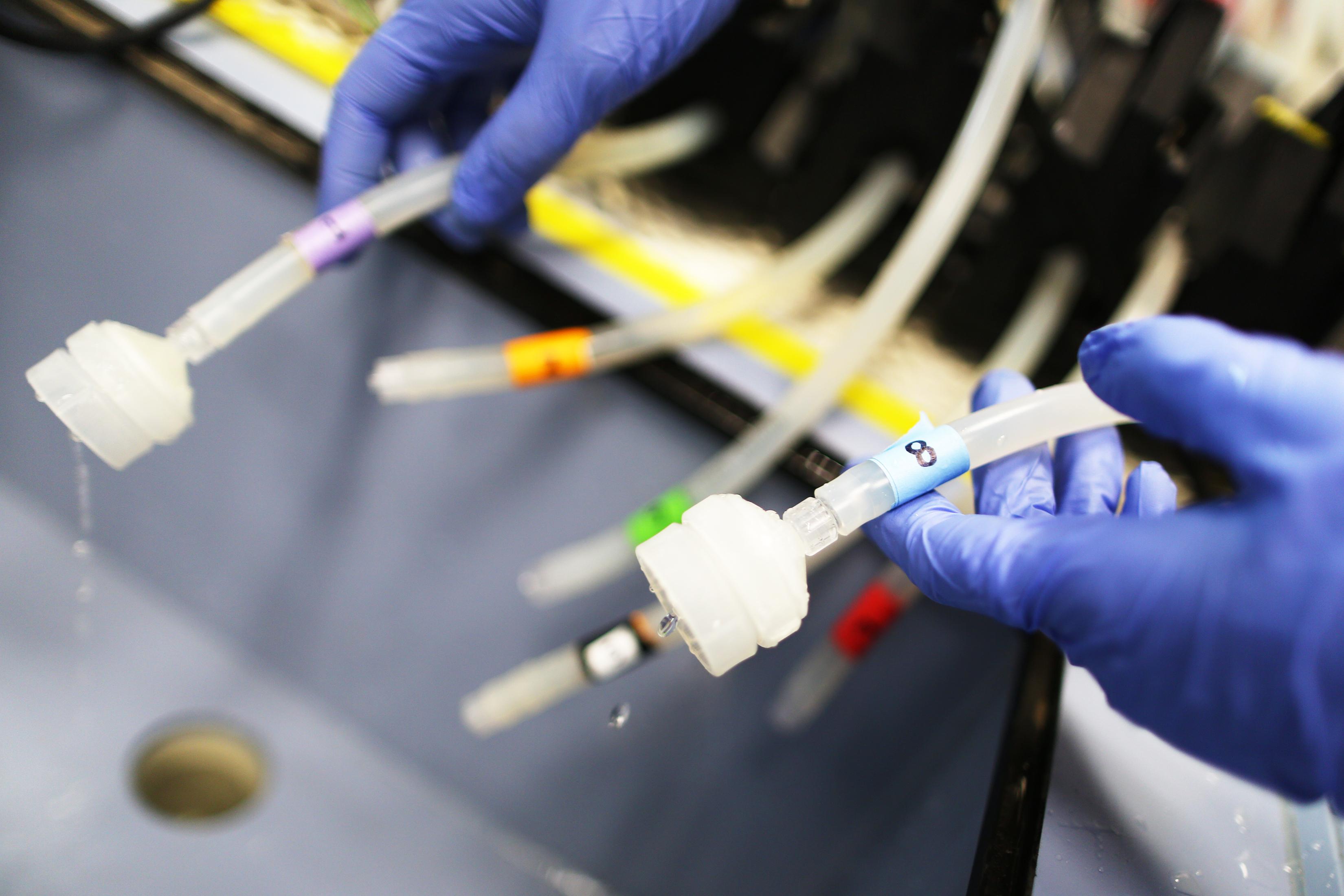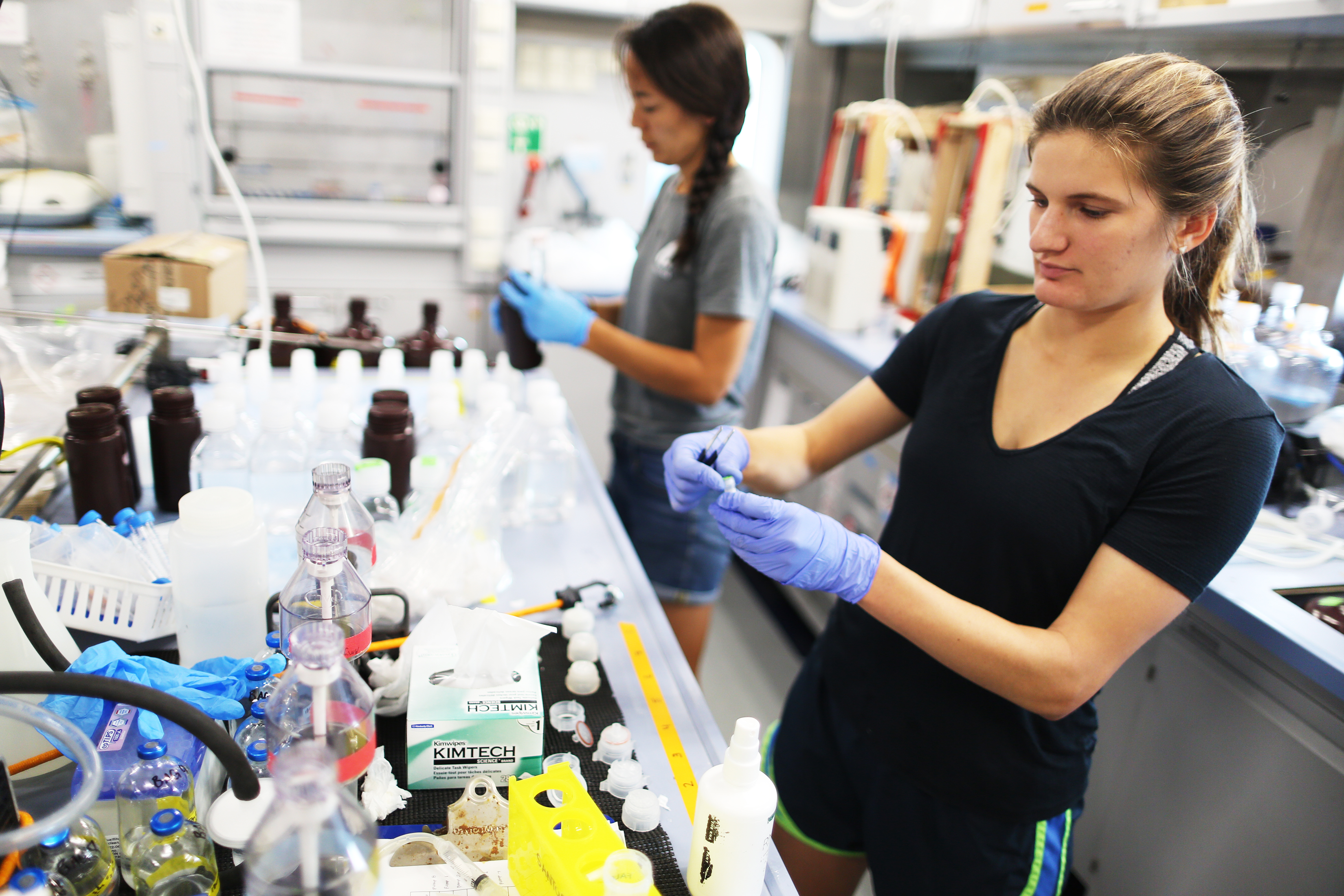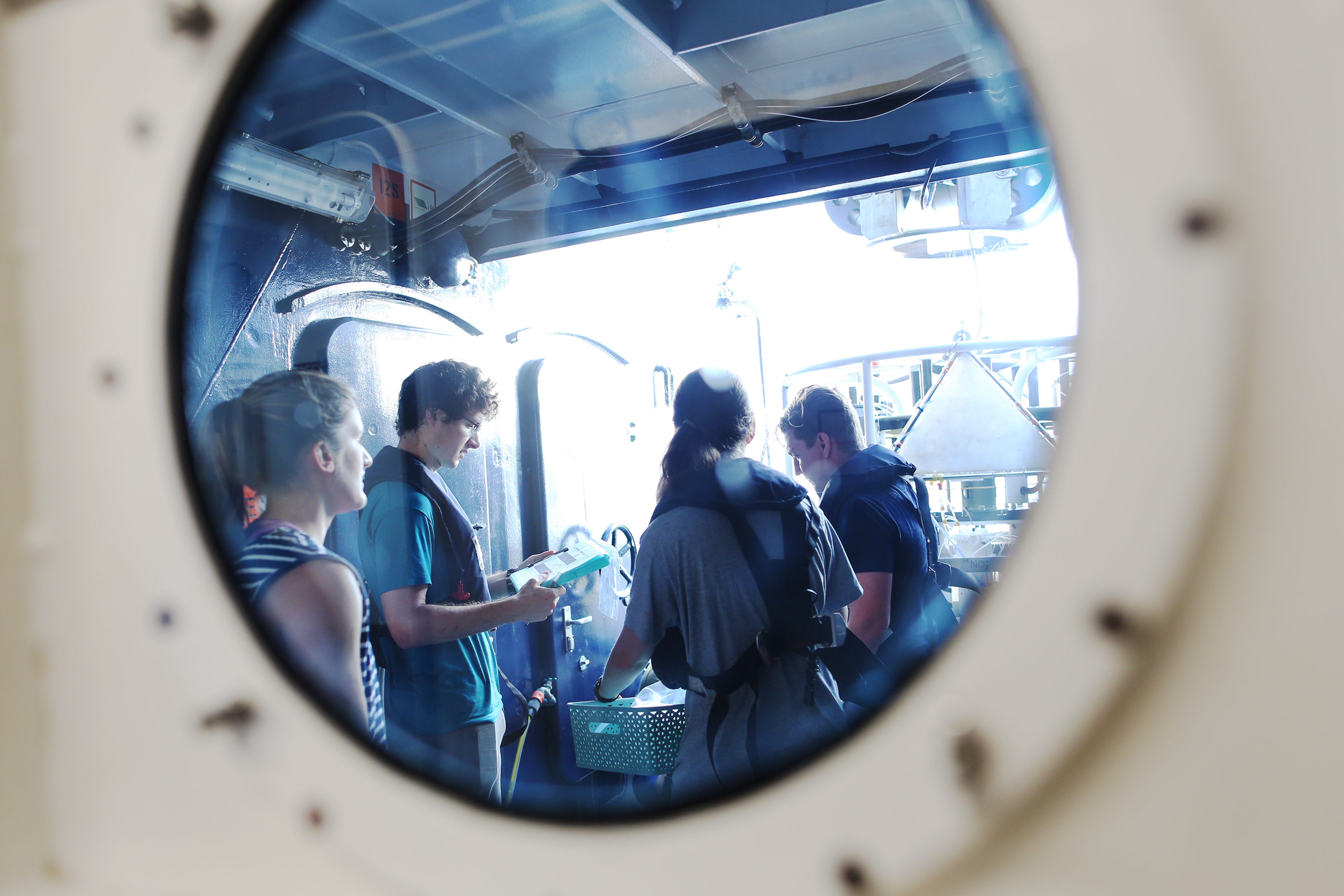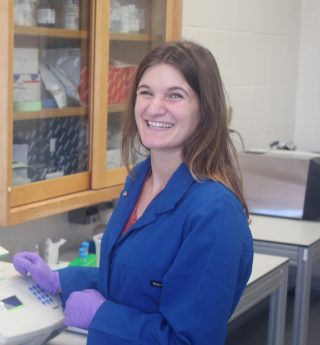Just before 7am, as the rest of the science team is still waking up, I dash around the wet lab, organizing bottles. I finish setting up some incubations right as the CTD rosette brings the next round of deep seawater onboard. I am tired after working through the night, but looking out at the morning sunshine and salty ocean spray on the port hole windows re-energizes me for the day ahead.
My life on the R/V Falkor revolves around a pump filtering hundreds of liters of seawater. With tubing twisting across my corner of the lab like a tentacled sea creature, my pump system allows me to collect DNA from the tiny microbes living at various depths in the ocean. Back home in Santa Barbara, I will use the DNA to investigate the abundance of several groups of nitrogen-cycling archaea at each depth sampled. By pairing this data with nitrification rates, we can hone in on organisms responsible for fluctuations in nutrient concentrations throughout the water column.

Food for Energy and Mass
After I finish filtering for the morning, I check my incubation bottles and head to the mess hall for breakfast. It is also meal time for the ammonia-oxidizing archaea (AOA) living in the bottles. Like any living organism, microbes must eat to survive and thrive, but the diet of a marine archaeon differs vastly from that of a seaward scientist. As I eat my bagel, they chow down on ammonium (NH4+) and convert it to nitrite (NO2–), completing the first step of nitrification. My bagel supplies me with the energy needed to shuttle heavy bottles of water from the sampling deck to the lab, and also provides me with the carbon my body uses to construct its cells. In contrast, AOA derive only their energy from ammonium. They must obtain their carbon elsewhere because ammonium has none—it is an inorganic compound. So where do these archaea get their carbon from?

I am answering this question by tracking how microbes process nutrients they encounter in the ocean. I can probe the dietary preferences of AOA by feeding them organic molecules with a special type of chemically-labeled carbon called a stable isotope. If the AOA consumed the meal I offered up, I will find that labeled isotope of carbon in their DNA. Determining the range of compounds that these microbes metabolize will increase understanding of their full contribution to the marine nitrogen cycle.
Another Day at the Office
As a microbiologist, I am no stranger to spending long hours in lab, but this is my first time doing science at sea. Instead of a traditional lab coat, I don a life vest and hard-hat while collecting water samples, and I strap my supplies down so they do not slide off the bench as the ships rolls with the ocean swells. When I am done feeding my microbes, I head outside for a nap — a brief moment of serenity before we reach our next sampling station and the work begins again!


